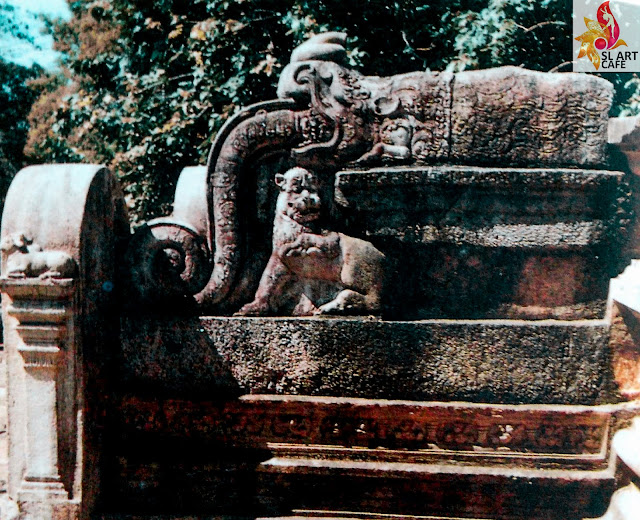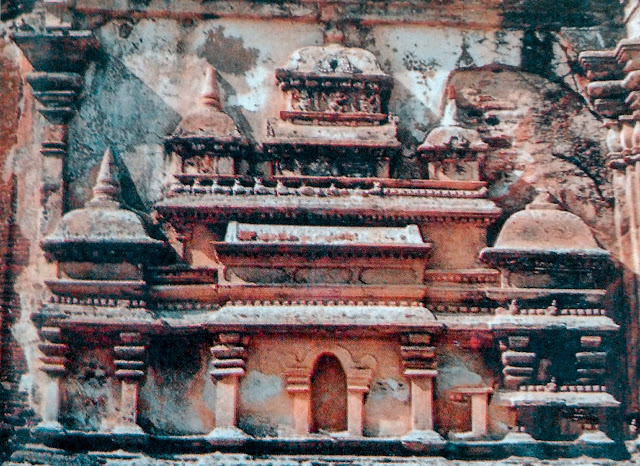Magha Invasion The End of Rajarata Civilization
Destruction of Magha Sri Lanka
The following sentiments are quoted from the Culavamsa:
Nissnka Mandapa Inscription
a man by name Magha, an unjust king sprung from the Kalinga line, in whom reflection was flooded by his great delusion, landed as leader of four and twenty thousand warriors from the Kalinga country and conquered the Island of Lanka". While the great warriors oppressed the people, boasting cruelly everywhere, ".
we are Kerala warriors", they tore from people their garments, their ornaments and the like,corrupted the good morals of the family which had been observed for ages, cut off hands and feet and the like (of the people), destroyed many houses and tied up cows, oxen and other (cattle) which they made their own property.
The expulsion of Kalinga Magha and the further destruction he did
After they had put fetters on the wealthy and the rich people and had tortured them and taken away all their possessions, they made poor people of them. They wrecked the image houses, destroyed many cetiyas, ravaged the viharas and maltreated the lay brethren.
They flogged the children, tormented the five(groups of the) comrades of the order, made the people carry burdens and forced them to do heavy labour. Many books are known and famous they tore from their code and strewed them hither and thither. The beautiful vast proud cetiyas like the Ratnavali (cetiya) and others which embodied as it were, the glory of the former pious kings, they destroyed by over-throwing them and alas! many of the bodily relics, their souls as it were, disappeared. Culavamsa goes on to describe the disruption caused by the SOClal order by Magha. It is noteworthy that this king harassed maha sangha in particular and launched a merciless onslaught against it.
Makara Balustrade-Vatadage
 |
| Vimana-Lankathilaka |
It is 'also said that many viharas and parents worked into residences for his 'soldiers. As a result, many Ch monks were compelled to leave the country and take in South India. All these activities of Magha, especial the theirinst the Buddhist monks, may have been to weaken eir influential role in the political affairs of the country.
Hidden relics of the Tooth Relic Going to Kotmale
leading members of the Buddhist Order no doubt wielded great influence. Many acts of Magha show that he was not a Buddhist though Nisssankamalla boasted about Kalingas as pro-Sinhala Buddhists. Having inaugurated a reign of terror, he antagonised the people of the country very much and it seems he was unable to suppress the fighting spirit of the powerful Sinhala chieftains.
 |
| Vimana-Thivanka Pilimage |
 |
| Dava Figure-TivankaPilgrimage |
Finally, it was Vijayabahu IIl who gave the lead to oust Magha who adopted a policy of blood and iron to maintain his control over the country. But it took a few more years to oust Magha and that goal was achieved under the reign of his successor Parakramabahu II somewhere in 1255 AD By the end of the Kalinga period, the grandeur of Polonnaruva was lost. The University History of Ceylon says: "the period between 1186 and 1235 AD saw the last days of the glory that was Polonnaruva.
The culture and civilization of the Sinhalese which was fostered by Vijayabahu I and was given a great impetus by Parakramabahu I were gradually declining during this period, except for a bright flicker during the reign of Nissankamalla. The invasion of Magha only has-turned this process and brought about the final downfall of the civilization of the Polonnaruva period"



